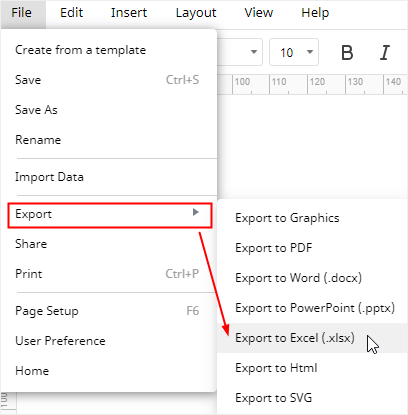How to Make a Bar Graph in Excel
A bar graph is one of the common graphs used to visualize complex data in people’s work or study and it looks like a horizontal column chart. This article will show you how to make a quick bar graph in Excel.
How to Make a Bar Graph in Excel
Step 1: Add Data
Enable Excel, open a new worksheet and add labels and data for the graph’s X-axis and Y-axis.
For example, in the below picture, “Day” in C3 is the label for X-axis and “Temperature” in D3 is the label for Y-axis. If the volume of the data is not too much, you can type or paste the text or number into cells directly.
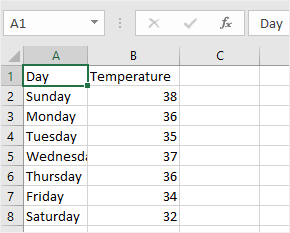
However, you can also choose to import data into Excel if the volume of data is too big. Go to Data tab, find Get External Data group and select one of the importing sources from the available choices.
Step 2: Create Your Bar Graph
Select the area range on the worksheet, go to Insert tab, find Charts groups on the ribbon and click the column icon to open the drop-down menu so that you can choose the desired bar graph.
When you pause the cursor on the chart thumbnails, you are able to preview different types of bar graphs on the worksheet. There are 2-D bar graphs and 3-D bar graphs in Excel and you can select suitable graph types to fit your requirements.
Click Recommended Charts button on Insert tab to open Insert Charts window. In Insert Charts window (All Charts), you can also choose suitable bar graph types and select the desired format.
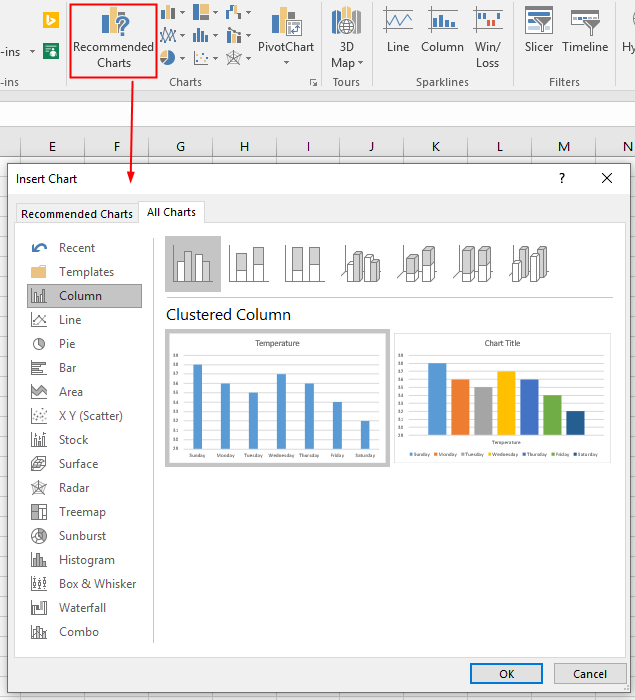
Step 3: Format Your Bar Graph
When you need to change the format of your bar graph, add chart elements (like axis titles, data labels, gridlines and trendline) or modify the color of the bar graph, there are abundant formatting tools in Excel, including Design tab, Format tab, Format Chart Area pane, floating buttons and the right-clicking contextual menu.

For example, if you need to change the layout or styles of your bar graph quickly, you can go to Design tab and find the preferred choices under Quick Layout button or Chart Styles list to customize your bar graph.
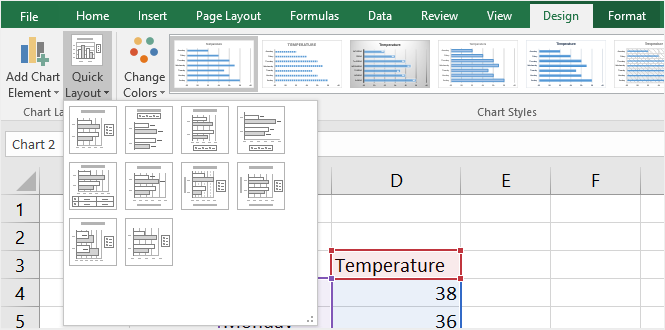
Please note that when you right-click on the different place of the bar graph, the right-clicking contextual menu will also have differences from others.
Or, if you choose different selection areas of the bar graph under Current Selection group on Format tab, the corresponding shape styles or WordArt styles will change, too.

Step 4: Move Your Bar Graph
To move your bar graph into another place, you can need to select the bar graph at first, click Move Chart button on Design tab or the contextual menu of Chart Area.
Then, you will see the Move Chart window to ask you to choose where to place your bar graph.
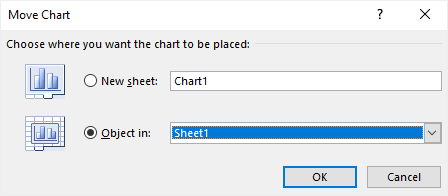
If you choose New Sheet, the bar graph will be moved to a new sheet called Chart1 and the bar graph will be on the center of the sheet; if you choose Object in, you can choose to move the bar graph into another worksheet.
Step 5: Change Graph Type
If you want to see other kinds of visual representations of the data, you can choose to change the type of the graph. You are able to find Change Chart Type button on Design tab or the contextual menu of Chart Area.
Next, Change Chart Type window will appear on the worksheet and it actually look the same as Insert Chart window. Then you can choose any other chart or graph type. When you are satisfied with the new chart through the preview thumbnails, click OK so that you can change the graph type quickly.
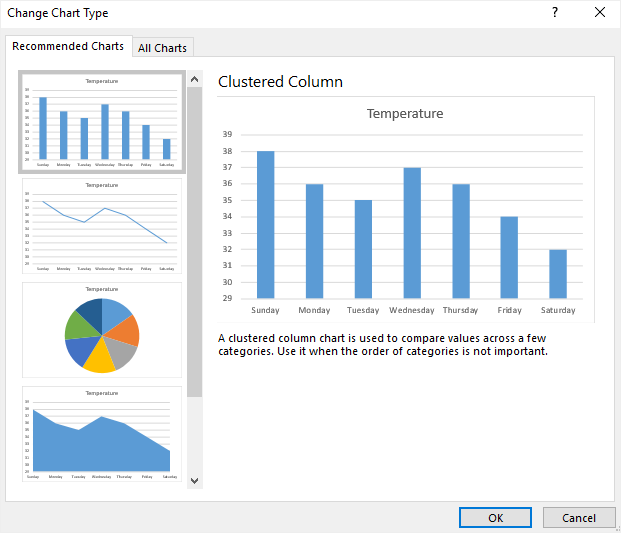
How to Make a Bar Graph in EdrawMax
Step 1: Select Chart Type
When you open a new drawing page in EdrawMax, go to Insert tab, click Chart or press Ctrl + Alt + R directly to open the Insert Chart window so that you can choose the desired chart type.
Here we need to insert a basic bar graph into the drawing page, so we can just select “Clustered Bar” from the window and click OK.

Step 2: Create Your Bar Graph
After you select the desired bar graph type and click OK, the example bar graph will appear on the drawing page with the Chart pane.
Then you need to import or enter the data for making the bar graph. Here we decide to import the data file and EdrawMax supports users to import xlsx or csv files.
Go to Data pane, click Import, find the data file in the local storage and click Open. Then you will see the data that you want to use appear on the Data pane, and at the same time, the bar graph on the drawing page will also be changed according to the imported data.
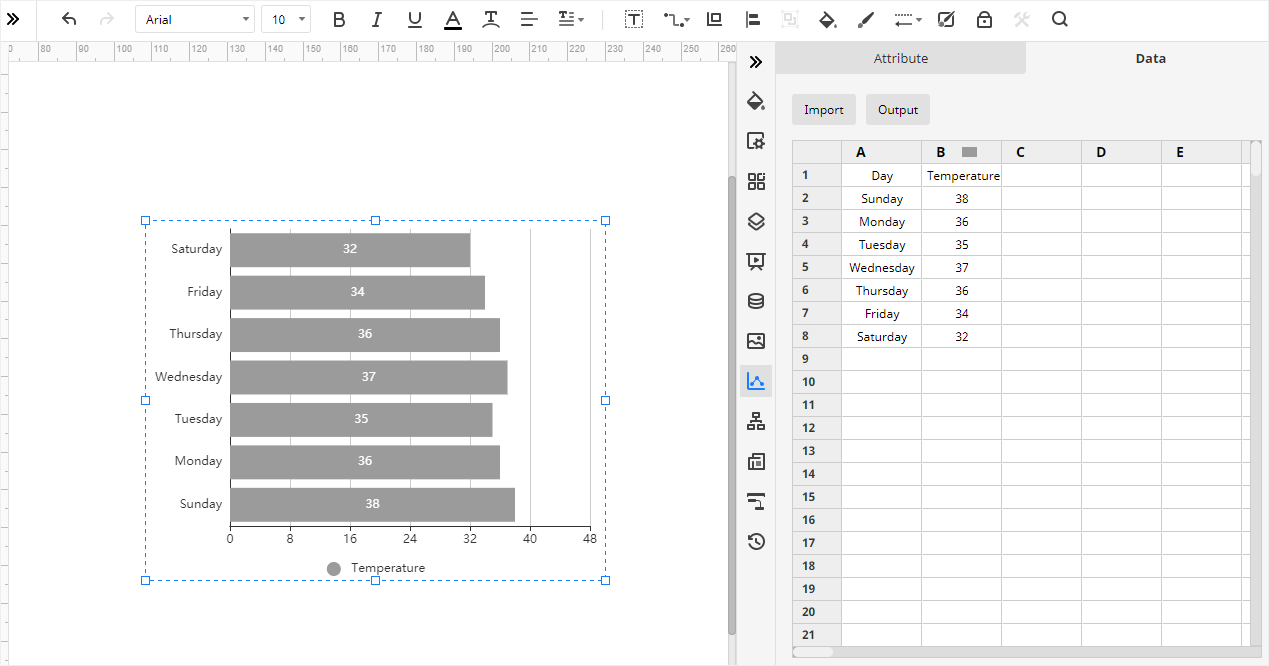
Step 3: Format Your Bar Graph
On the Attribute pane, you can change the format and various attributes of the bar graph freely, which include Chart Style, Series Setting, Tag Tittle, Cartesian Coordinate System and Data Format.
Especially, if you don’t like the color of the bar, you can go to find Tag Title, click the color icon next to the label and find the desired color on the drop-down menu.
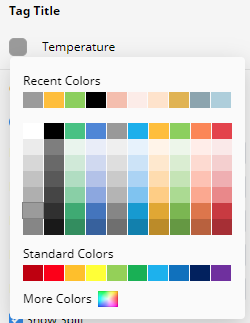
Step 4: Change Graph Type
In addition, EdrawMax also supports users to change chart types.
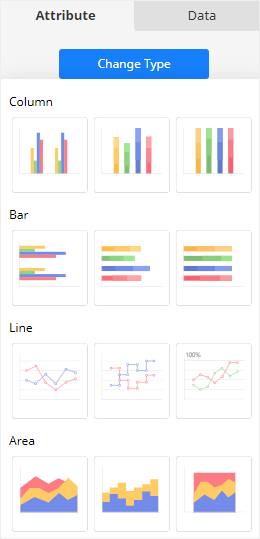
Step 5: Export Data File
When you have to save the data used for making the bar graph in EdrawMax Online, select the graph, go to Data pane and click Output to choose the file type that you want. At present, EdrawMax allows users to export the data as the file types of xlsx and csv.
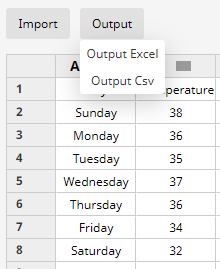
How to Export an EdrawMax Graph as Excel File
When you finish making a bar graph in EdrawMax Online, you are also able to save and export the graph as an Excel file.
Go to File tab, click Export > Export to Excel, and EdrawMax will automatically save and download the created bar graph as an Excel file. So you can get a bar graph in Excel format. All the Microsoft Office files exported from EdrawMax are editable.
Thus, there will be less trouble or difficulty in creating a bar graph with the help of EdrawMax and you can freely share your graphs and charts made by EdrawMax with your colleagues or friends who don’t use EdrawMax.
In addition, you and your friends are able to edit and modify the exported bar graph in Microsoft Excel (only for 2013 or above version) directly.
